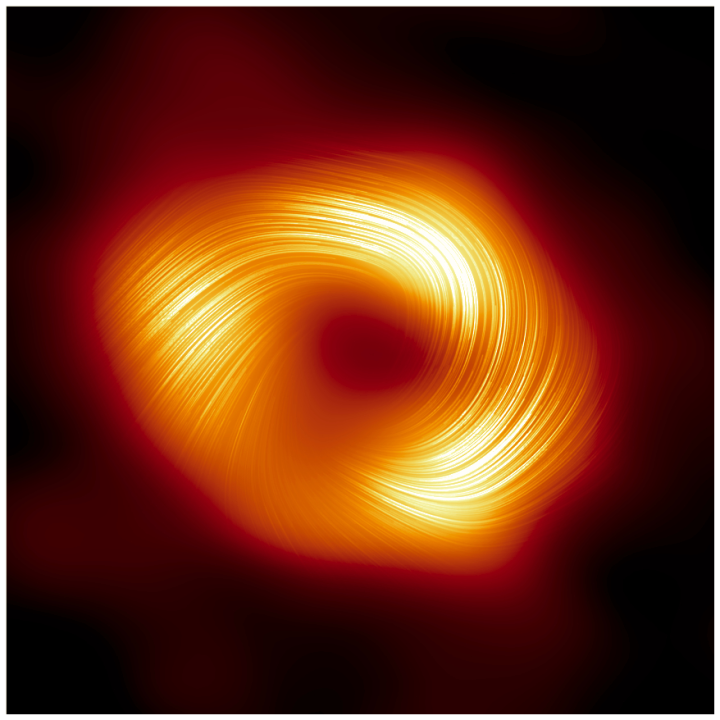The Event Horizon Telescope collaboration, the group that took the historic first-ever image of a black hole, is back with a new stunning black hole image. This one shows the magnetic fields twirling around the supermassive black hole at the heart of our galaxy, Sagittarius A*.
Black holes are hard to image because they swallow anything that comes close to them, even light, due to their immensely powerful gravity. However, that doesn’t mean they are invisible. The black hole itself can’t be seen, but the swirling matter around the event horizon’s edges glows brightly enough to be imaged. This new image takes advantage of a feature of light called polarization, revealing the powerful magnetic fields that twirl around the enormous black hole.

“What we’re seeing now is that there are strong, twisted, and organized magnetic fields near the black hole at the center of the Milky Way galaxy,” said Sara Issaoun, co-lead of the project at the Center for Astrophysics | Harvard & Smithsonian, in a statement. The image enabled the researchers to compare this black hole, also known as Sgr A*, to the famous first imaged black hole, M87*.
“Along with Sgr A* having a strikingly similar polarization structure to that seen in the much larger and more powerful M87* black hole, we’ve learned that strong and ordered magnetic fields are critical to how black holes interact with the gas and matter around them,” Issaoun said.
The polarization of light refers to the orientation in which the waves fluctuate. When light is polarized, it is oscillating in a particular direction, and though it looks the same as regular light to human eyes, researchers can study this polarized light to learn about the orientation of magnetic fields.
“By imaging polarized light from hot glowing gas near black holes, we are directly inferring the structure and strength of the magnetic fields that thread the flow of gas and matter that the black hole feeds on and ejects,” explained project co-lead Angelo Ricarte. “Polarized light teaches us a lot more about the astrophysics, the properties of the gas, and mechanisms that take place as a black hole feeds.”
The researchers used a similar technique to examine the magnetic fields of M87* in 2021, and now that they have a similar image of Sagittarius A*, they can compare the two. A striking finding is that even though Sagittarius A* is more than a thousand times smaller than M87*, the two have remarkably similar magnetic fields.
“The fact that the magnetic field structure of M87* is so similar to that of Sgr A* is significant because it suggests that the physical processes that govern how a black hole feeds and launches a jet might be universal among supermassive black holes, despite differences in mass, size, and surrounding environment,” said EHT Deputy Project Scientist Mariafelicia De Laurentis. “This result allows us to refine our theoretical models and simulations, improving our understanding of how matter is influenced near the event horizon of a black hole.”



